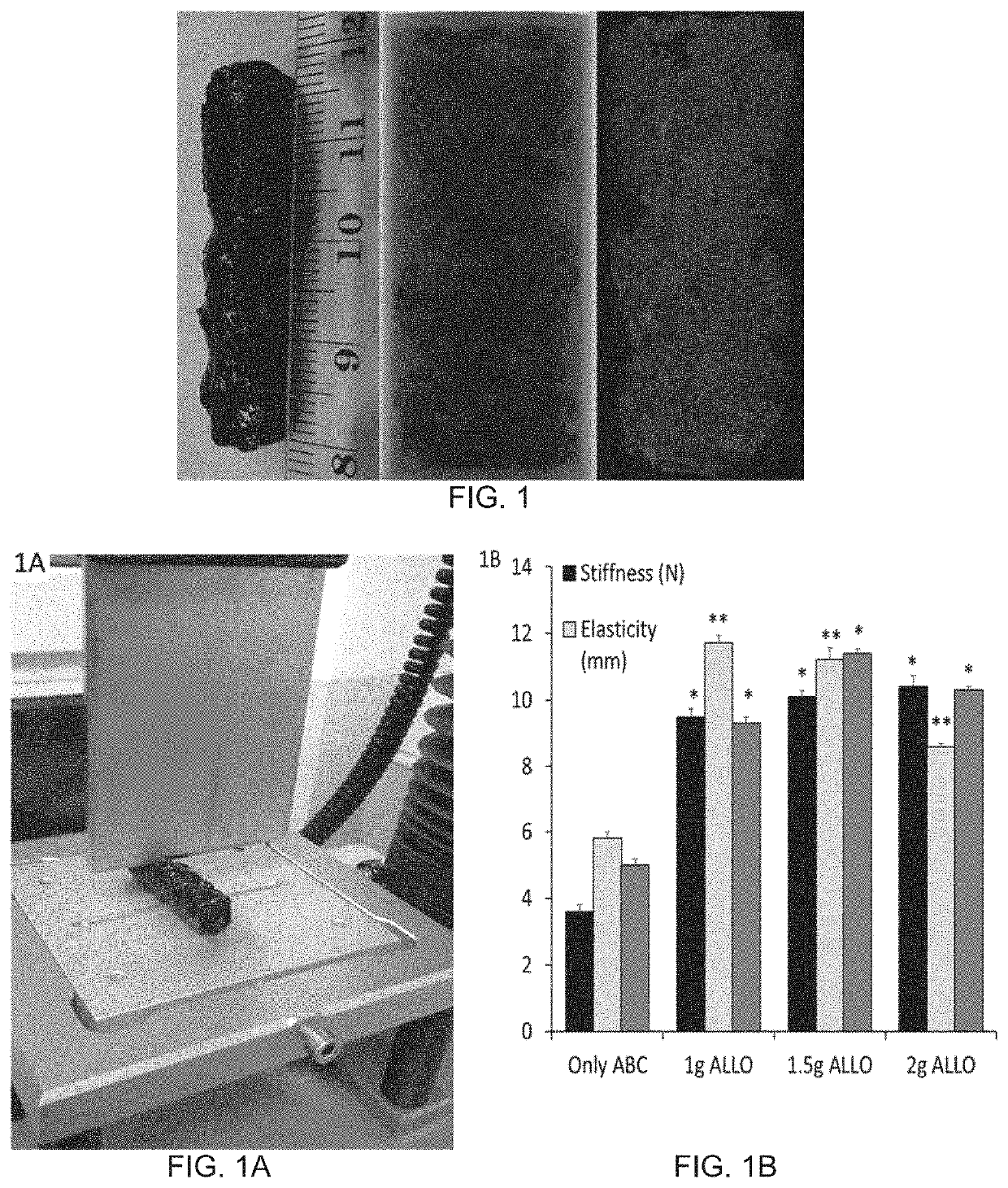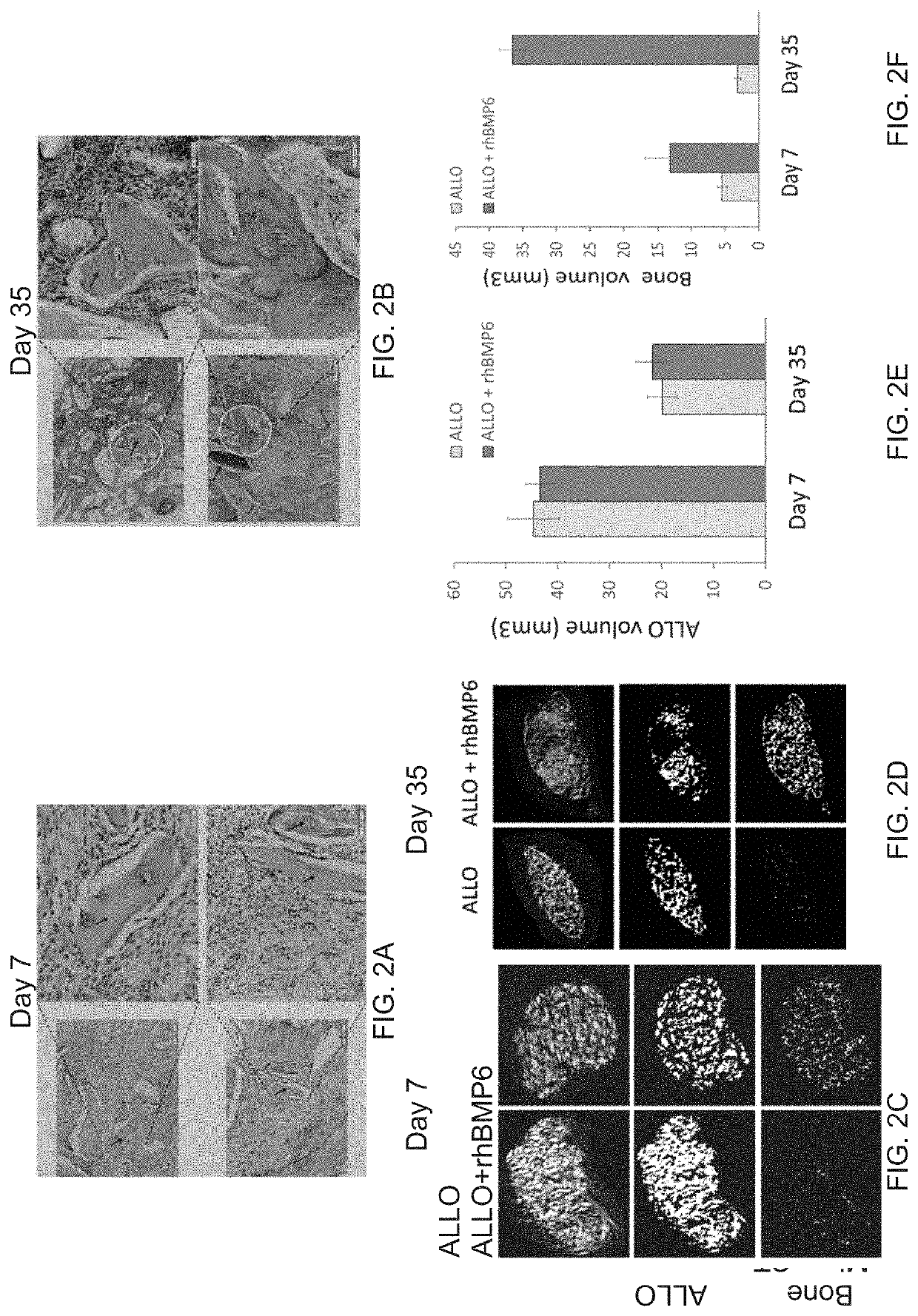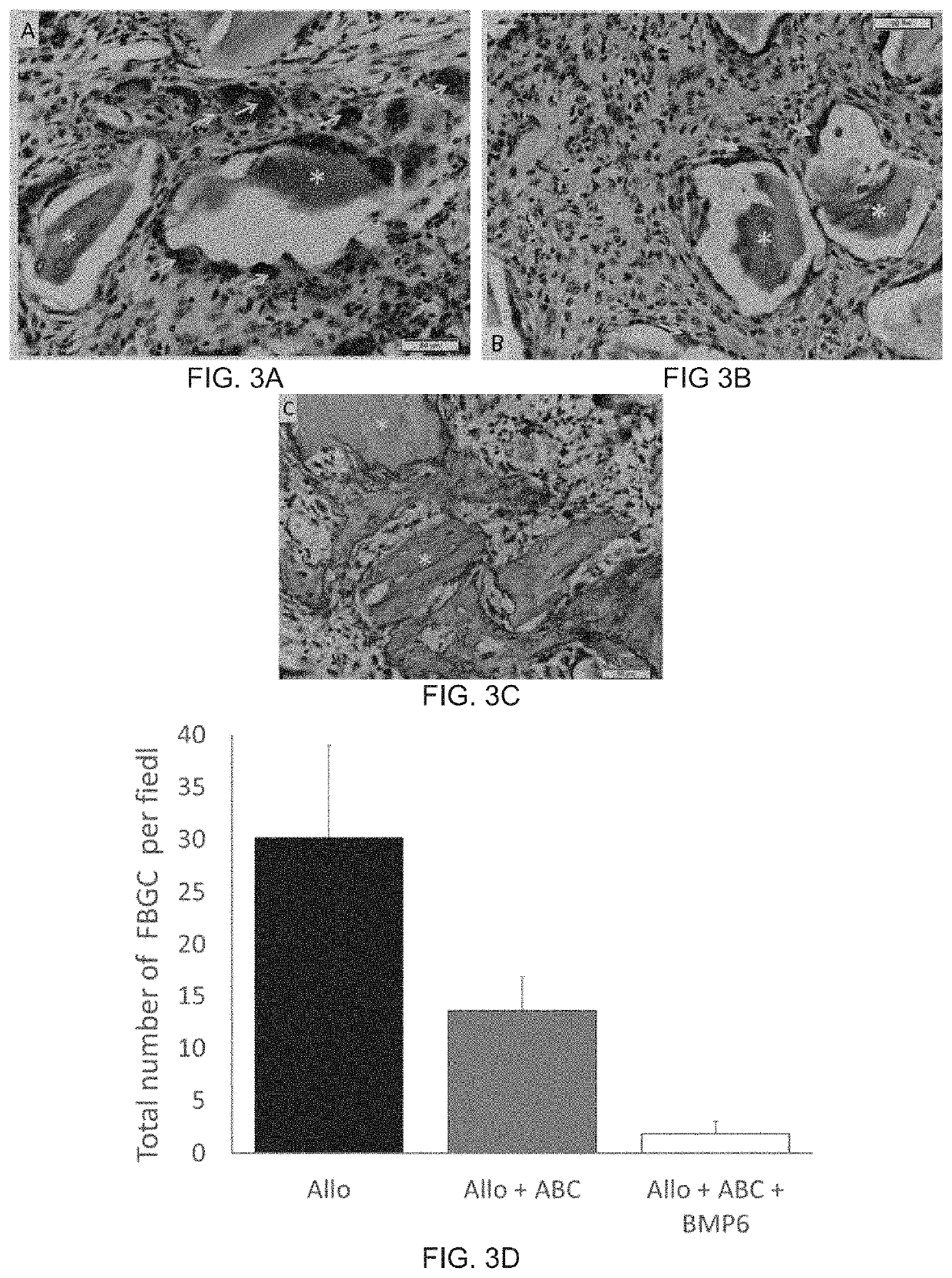Autologous Bone Graft Substitute
a bone graft and autologous technology, applied in the field of autologous bone graft substitute, can solve the problems of limited amount of igbg that could be harvested, increased infection risk, congressional hearing, etc., to enhance the vertebral body, promote bone growth, and enhance the effect of bone mineral density of the femoral head
- Summary
- Abstract
- Description
- Claims
- Application Information
AI Technical Summary
Benefits of technology
Problems solved by technology
Method used
Image
Examples
example 1
Preparation of Autologous Bone Graft Substitute Composition (ABGS)
[0189]Autologous Bone Graft Substitute (ABGS) is composed of the following:[0190]1) Recombinant human BMP6 (rhBMP6);[0191]2) Autologous blood; and[0192]3) Calcium or Strontium or Magnesium salt (at low mM) being in a form of aqueous solution, or nanoparticles or microspheres
[0193]or[0194]1) Recombinant human BMP6 (rhBMP6);[0195]2) Autologous blood;[0196]3) Calcium or Strontium or Magnesium salt (at low mM) being in a form of aqueous solution or nanoparticles or microspheres; and[0197]4) Compression Resistance Matrix (CRM)
[0198]Methods of Preparation
[0199]Method #1: Comparative Bone Draft without Compression Resistance Matrix (CRM) Component
[0200]Comparative bone graft is composed of the following:[0201]1) Recombinant human BMP6 (rhBMP6)[0202]2) Autologous blood[0203]3) Calcium or Strontium or Magnesium salt (at low mM) being in a form of aqueous solution, or nanoparticles, or microspheres
[0204]Autologous Blood is draw...
example # 2
EXAMPLE #2
Methods of CRM Evaluation (Rat Subcutaneous Implants)
[0232]The following CRMs are used in the preparation of the ABGS.[0233]Allograft[0234]TCP[0235]HA[0236]TCP / HA conjugates[0237]Calcium sulfate[0238]Calcium-phosphate-carbonate composite (ceramics)[0239]Bioresorbable polymers[0240]Bioresorbable Hydrogels
[0241]The following geometry of a given CRM used in the fabrication of the ABGS[0242]Particle size is in a range from 74 μm to 8 mm[0243]CRM may be in a form of particles or may have a shape of any one selected from cylinder, slab, sheet, mesh, or any other shape depending on a bone defect
[0244]The CRMs with varying physical properties are formulated with rhBMP6 using either method #2 or #3 as described in Example #1. The cellular response and bone-inducing activity of the Autologous Bone Graft Substitute composition ABGS was assessed by implanting at subcutaneous sites or by injecting percutaneously into abdominal fascia or skeletal muscle pouches of rodents. At 1, 3, 7 an...
example # 3
EXAMPLE #3
Unexpected Biological Activity of Autologous Blood
[0247]Rat Subcutaneous Implant assay was used to assess the role of autologous blood in overcoming the inflammatory and foreign-body reaction in the ABGS that contained CRM (Allograft and / or Synthetic Ceramics (Tri-calcium phosphate or Hydroxyapatite or combination thereof) has been used in generating the ABGS using the method#2 or #3. hBMP6 osteogenic activity was tested at different doses. ABC / rhBMP6 / ALLO implants, rat allograft particles of 74-420 μm were added at 0.1 to 0.5 g / ml autologous blood.
[0248]To identify inflammation and foreign body rejection in allograft containing implants, implants are harvested from day 1, 3 and 7 and sections were stained by H&E / or Toluidine blue staining and acid phosphatase detection by histochemistry on paraffin embedded sections. Groups examined included allograft only, allograft mixed with the ABC or allograft with the ABC and 25 μg rhBMP6 per ml of autologous blood, the implants wer...
PUM
| Property | Measurement | Unit |
|---|---|---|
| time | aaaaa | aaaaa |
| temperature | aaaaa | aaaaa |
| body temperature | aaaaa | aaaaa |
Abstract
Description
Claims
Application Information
 Login to View More
Login to View More - R&D
- Intellectual Property
- Life Sciences
- Materials
- Tech Scout
- Unparalleled Data Quality
- Higher Quality Content
- 60% Fewer Hallucinations
Browse by: Latest US Patents, China's latest patents, Technical Efficacy Thesaurus, Application Domain, Technology Topic, Popular Technical Reports.
© 2025 PatSnap. All rights reserved.Legal|Privacy policy|Modern Slavery Act Transparency Statement|Sitemap|About US| Contact US: help@patsnap.com



